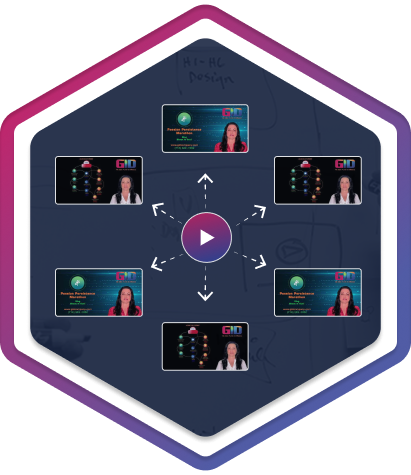What is GID’s Prototype Development Service?

Expert Prototype Development Services
With our prototype development services, you can:
- Visualize Your Concept: Transform abstract ideas into physical forms, allowing you to see and feel your product before investing in mass production.
- Validate Design Decisions: Test and evaluate the functionality, usability, and aesthetics of your product, identifying and addressing potential issues early in the development cycle.
- Reduce Risks and Costs: Mitigate the risks associated with launching a new product by identifying and resolving design flaws and manufacturing challenges before mass production.
- Accelerate Time-to-Market: Streamline your product development process by quickly iterating and refining your design based on real-world testing and feedback.
- Secure Funding and Investment: Showcase your product’s potential to investors and stakeholders with a tangible, working prototype that demonstrates its value and market viability.
Partner with GID Company to experience the power of prototype development. Let us help you refine your vision, reduce risks, and launch a product that exceeds expectations.
What GID’s Prototype Development Services Include
GID Company's prototype development services are your key to unlocking innovation and accelerating your product's path to market success. We offer a comprehensive suite of solutions designed to transform your concepts into tangible reality, ensuring your product is thoroughly tested, refined, and ready for production.
Our prototype development services include:
Concept Prototypes
Transforming your initial ideas into physical form, allowing for early visualization and refinement of design concepts.
Functional Prototypes
Creating working models that demonstrate key features and functionalities, enabling comprehensive testing and user feedback.
Appearance Models
Crafting high-fidelity prototypes that closely resemble the final product's aesthetics and materials, ideal for showcasing and marketing purposes.
Engineering Prototypes
Developing prototypes that focus on the technical aspects of your product, ensuring its performance, reliability, and manufacturability.
Rapid Prototyping
Utilizing advanced technologies like 3D printing and CNC machining to accelerate the prototyping process, enabling quick iterations and design refinements.

From Idea to Reality - Watch How We Do It!
Explore our videos to see how we seamlessly transform your ideas into reality.
Our Prototype Development Process
-
Project Kickoff
We initiate a collaborative discussion to understand your product vision, goals, and technical requirements.
-
Concept Visualization
We create initial sketches, digital renderings, or 3D models to visualize the concept and gather your feedback.
-
Design for Manufacturing (DFM)
We analyze the design for manufacturability, optimizing for cost-effectiveness and efficient production.
-
Material Selection
We carefully choose materials that align with your product's functionality, aesthetics, and budget.
-
Prototype Fabrication
Using cutting-edge technology like 3D printing or CNC machining, we create a physical representation of your design.
-
Assembly & Initial Testing
We assemble the prototype and conduct initial tests to evaluate basic functionality and identify potential issues.
-
Refinement & Iteration
We gather your feedback, make necessary design adjustments, and create revised prototypes for further testing and evaluation.
-
Comprehensive Testing
We perform rigorous testing to assess performance, durability, and usability in real-world scenarios.
-
Final Refinement
We incorporate final feedback and make any last-minute adjustments to perfect the prototype's design and functionality.
-
Prototype Delivery
We deliver a fully functional, high-quality prototype that accurately represents your product vision and is ready for further testing or production.
Why Choose GID for Your Prototype Development Needs
GID Company is your trusted partner in transforming your product vision into tangible reality through expert prototype development. We offer a unique combination of technical expertise, cutting-edge technology, and a collaborative approach that sets us apart in the industry.
Here's why choosing GID for your prototype development needs is a smart move:
Comprehensive Prototyping Expertise
Our team is well-versed in a wide range of prototyping technologies, from 3D printing and CNC machining to vacuum casting and injection molding. We tailor our approach to your specific needs, ensuring the most effective and efficient prototyping solution for your product.
End-to-End Prototyping Support
We offer comprehensive support throughout your entire product development journey, from initial concept to final production. Our prototype development services seamlessly integrate with our design and engineering capabilities, ensuring a smooth transition from prototype to market-ready product.
Rigorous Quality Assurance
We adhere to strict quality control standards at every stage of the prototyping process. Our experienced engineers and technicians meticulously inspect and test each prototype to ensure it meets your exact specifications and performs flawlessly.
Client-Focused Collaboration
We believe in open communication and collaboration throughout the entire prototyping process. We value your input and feedback at every step, ensuring the final prototype aligns perfectly with your vision and exceeds your expectations.

Not Sure Where To Start?
Call JIMFAQs
-
What is the typical turnaround time for prototype development at GID Company?
The turnaround time for prototype development varies depending on the complexity of your product and the chosen prototyping method. Simple prototypes can often be completed in a matter of days, while more complex projects may take several weeks. We prioritize efficiency and work closely with you to establish realistic timelines that align with your project goals.
-
What types of materials can GID Company use for prototyping?
We offer a wide range of materials for prototyping, including plastics, metals, composites, and more. The choice of material depends on your product’s specific requirements, such as functionality, aesthetics, and budget. We can help you select the most suitable materials to achieve your desired outcome.
-
Can GID Company create prototypes for products with complex mechanical or electrical systems?
Yes, we have experience designing and prototyping products with complex mechanical, electrical, and electromechanical systems. Our team of engineers and technicians can handle a wide range of technical challenges to ensure your prototype functions as intended.
-
How does GID Company ensure the confidentiality of my product design during prototype development?
We understand the importance of protecting your intellectual property. We have strict confidentiality agreements in place to safeguard your designs and trade secrets. You can trust us to handle your confidential information with the utmost care and discretion.
-
Does GID Company offer any post-prototype development services, such as design refinement or manufacturing assistance?
Yes, we offer comprehensive product development services that extend beyond prototyping. We can help you refine your design based on prototype testing, assist with manufacturing, and even provide marketing and launch support to ensure your product’s success in the market.















